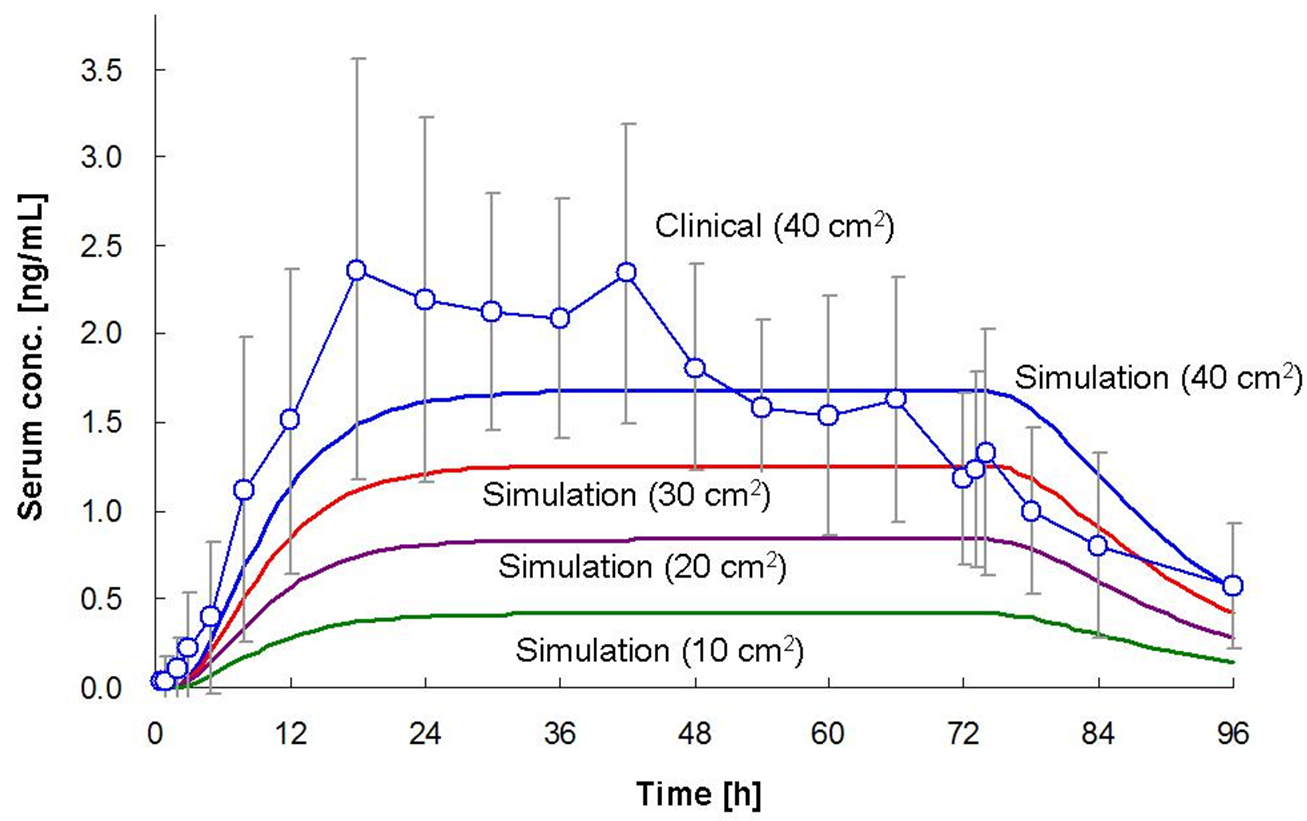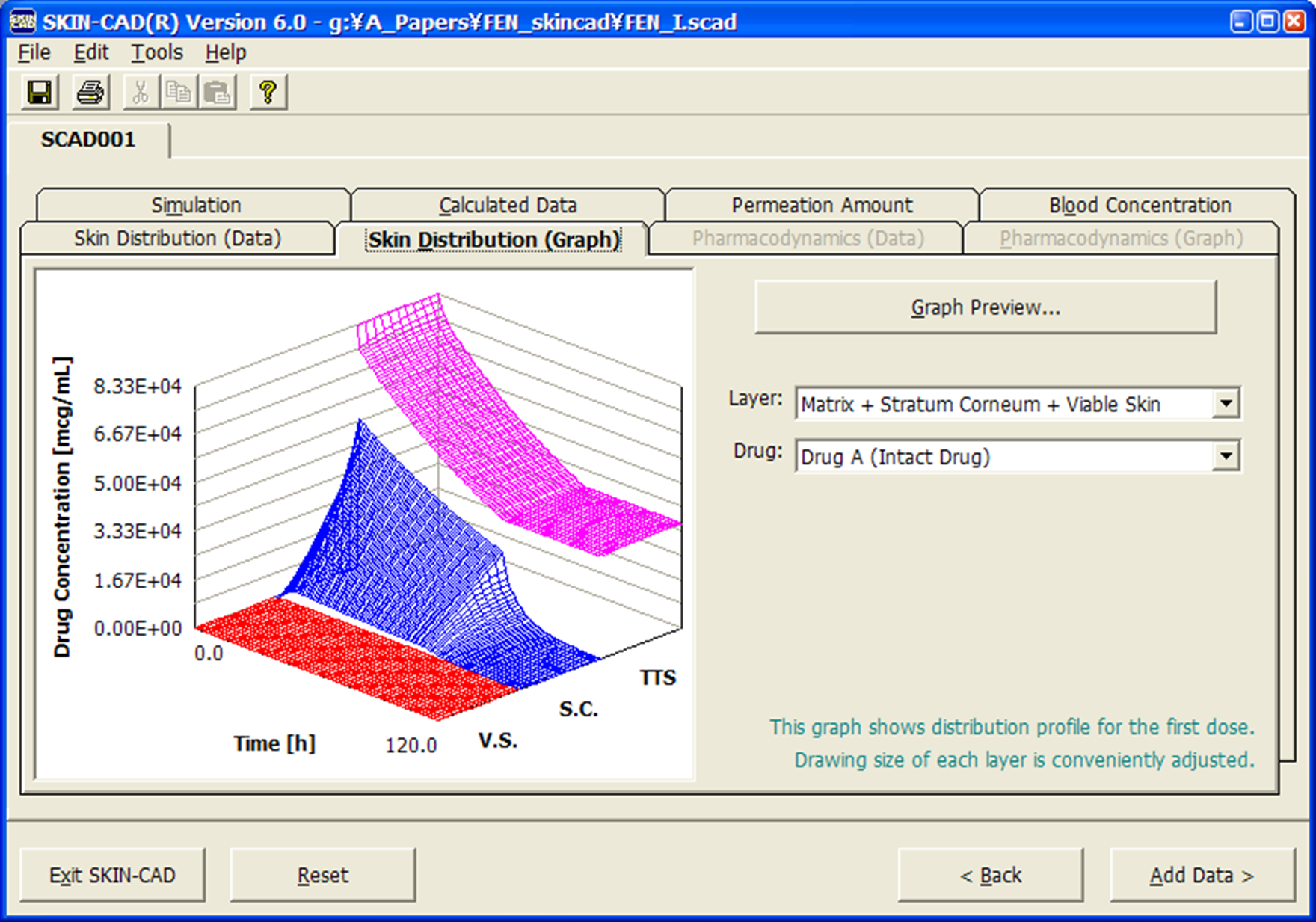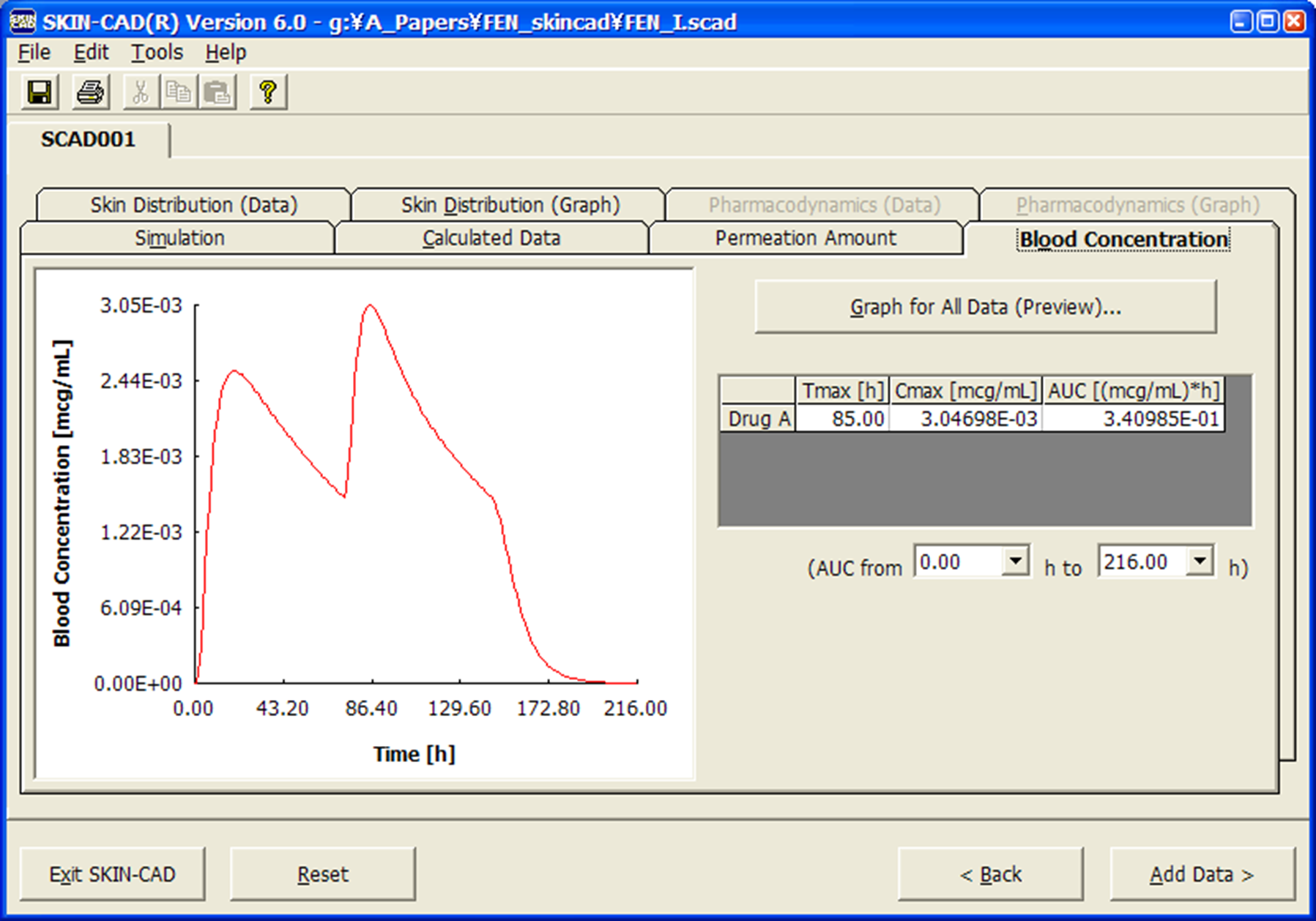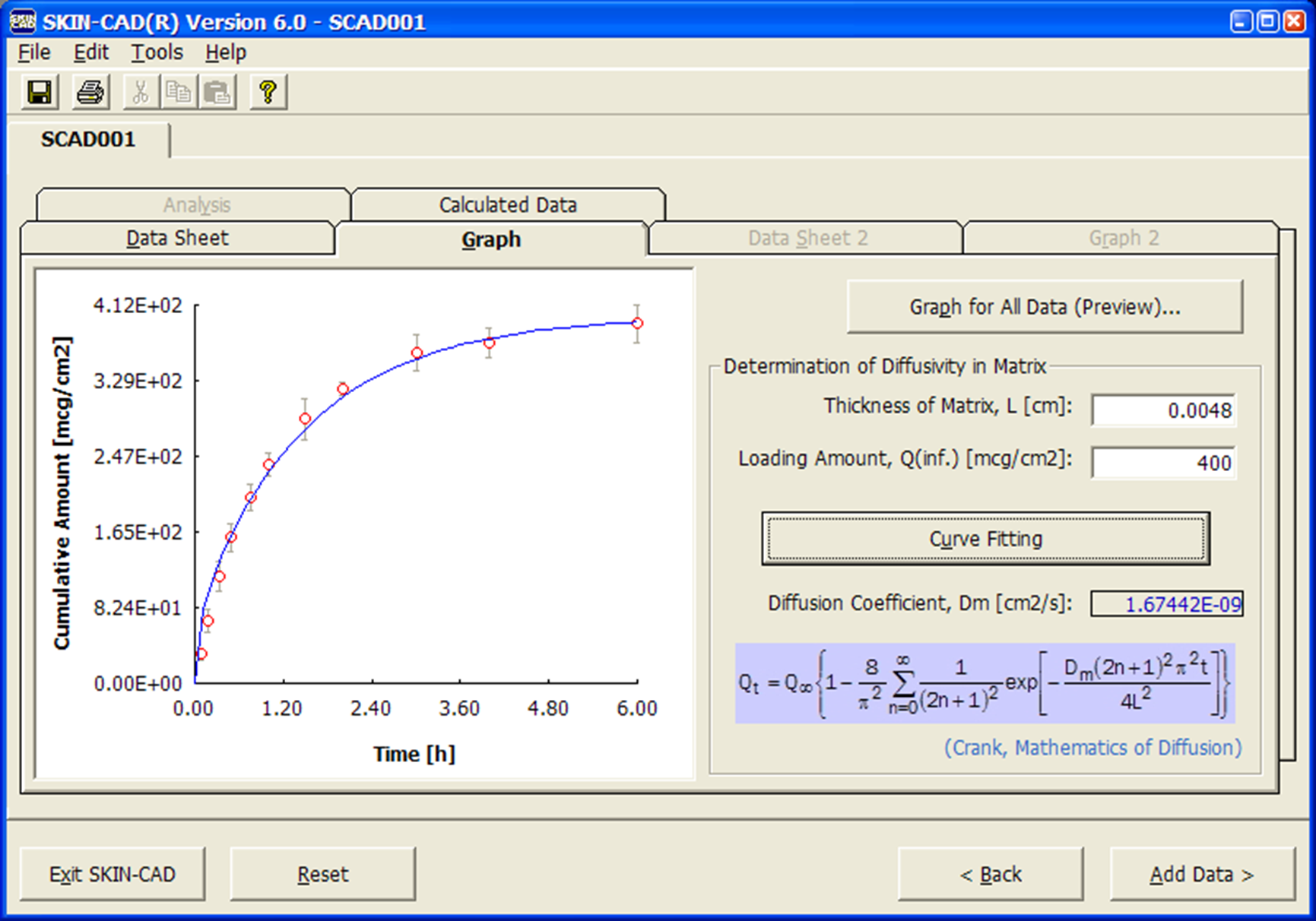- Skin permeation model (2-layer or 1-layer).
- Drug-dissolved matrix system/skin permeation model.
- Drug-dispersed matrix system/skin permeation model.
- Vehicle compartment/skin permeation model.

Serum fentanyl concentration-time profiles following transdermal delivery.






